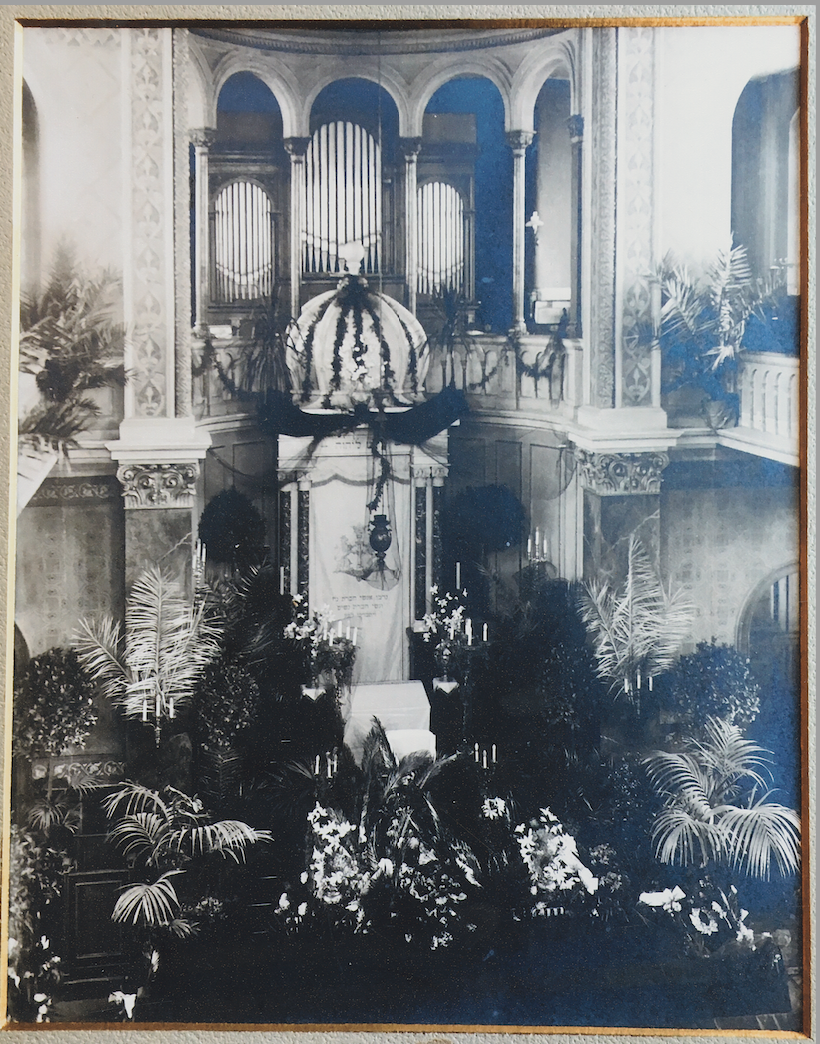A Jewish House of G-d

Shavuot celebration in the Great Synagogue, 1895 © Erfurt Municipal Archives
The word synagogue comes from the classical Greek translation of the Hebrew Bible and means “assembly.” It is here that the Jewish community holds its worship services. Yet the synagogue is also a place of learning and a gathering place for the community. Over the course of the year, the members celebrate several important holidays commemorating Jewish history and keeping the Jewish culture alive. These include Shavuot, honoring the revelation of the Torah, and Hanukkah, the Festival of Lights.
Light and Color
Thanks to its great round-arched windows, the Erfurt Synagogue was flooded with light. The paintings decorating the walls changed over the decades. The color scheme you see in the interior is modeled after the painted decorations of 1908, described in the Erfurter Allgemeine Anzeiger as follows:
"The wagon ceiling soars overhead in a soft, yellowish, light-filled hue. The semi-circular wall zones over the choir and the gallery opposite are embellished with arabesques painted freehand and – like all the ornamentation here – modern in design. The richest element in terms of color effect is the little choir, whose vault is covered with antique gold. This use of gold on the choir walls in combination with a deep, full red accounts for the imposing and festive atmosphere."
The Worship Service
Judaism is the oldest religion that worships only one all-encompassing G-d. In their prayers, the congregation communicate directly with G-d; there is no intermediary between him and the individual in the Jewish faith. To celebrate a worship service, at least ten Jews who have attained religious maturity must be present. This group is called a minyan. In Orthodox Judaism, a minyan consists of ten male Jews thirteen years and older. In non-Orthodox congregations, women and girls from the age of twelve can belong to the minyan.
Whereas on workdays, the faithful can recite the prescribed prayers at home if they like, on Shabbat they must come to the synagogue. This day of rest and worship begins on Friday evening shortly before dark and ends on Saturday evening at nightfall.
The heart of the synagogue is the Ark – the shrine holding the Torah scrolls – which always faces toward Jerusalem. The worshippers also turn toward Jerusalem when they pray because that is where the Temple stood. Like the lamp always burning in the Temple, the eternal light in front of the Ark symbolizes the presence of G-d. Out of reverence for him, all male members of the synagogue must cover their heads. Many Jews – and, increasingly, also Jewesses – also wear the kippa in everyday life as a sign of their faith.